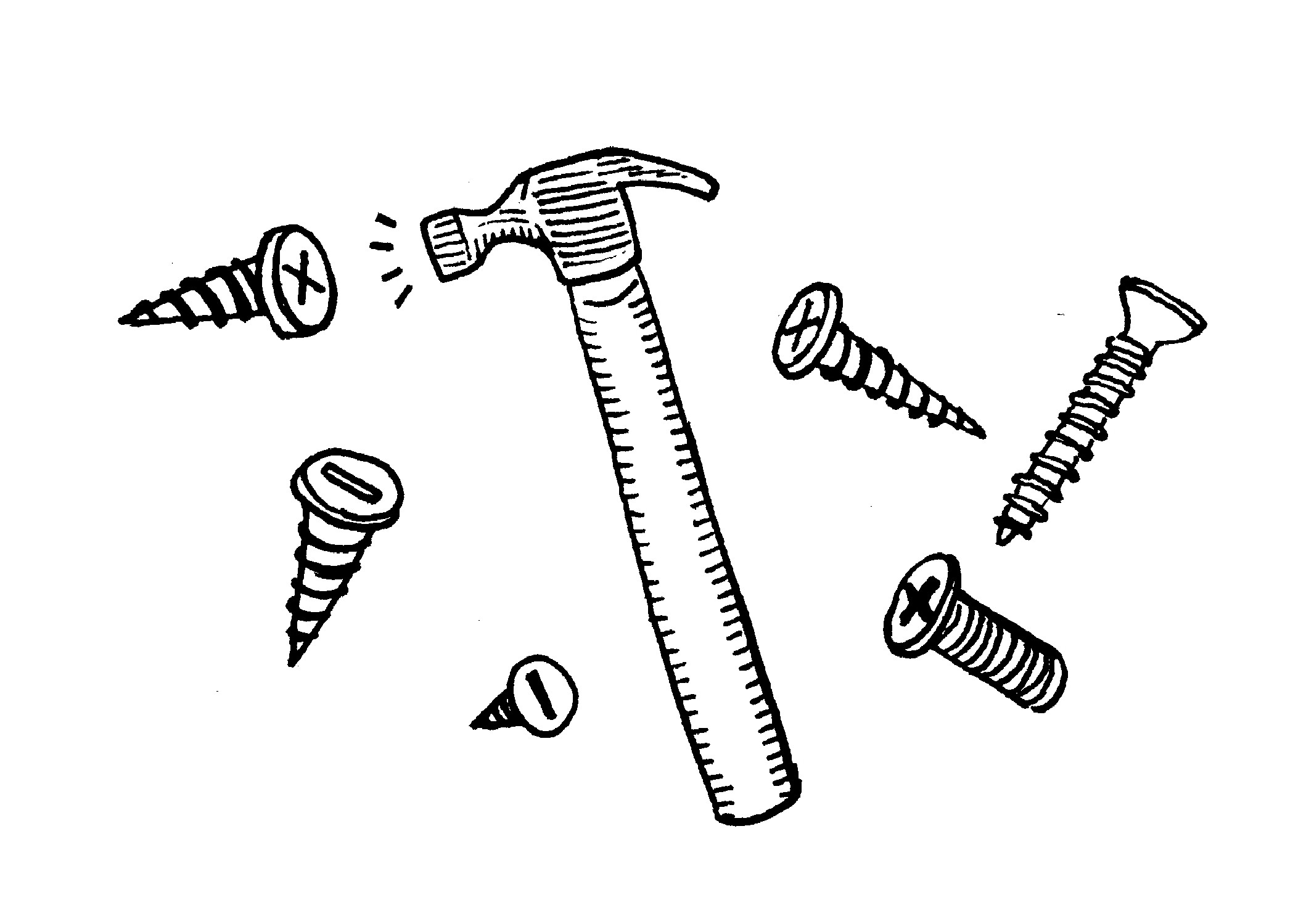
Last week, everyone who works at Basecamp was asked if they had any home improvement tips. In the spirit of sharing the fruits of hard-earned experience, I confessed to my colleagues about the time I tried to hammer in a screw.
Now, this is not a parable about the hacker ethos. I was not a hero, scrappily doing whatever it takes to get the job done against the odds. I was a fool, and I ruined that desk. Use the right tools if you have them.
There’s a tool I reach for more than any other. It’s hard to use, exhausting even. It’s never the fastest option. It takes longer, costs more, and people don’t always appreciate the extra effort. You might be thinking that with my track record, I clearly can’t be trusted to pick the instruments of work. Bear with me. I’ll try to explain.
I’m lucky enough to spend my life in the pursuit of happiness — mostly the happiness of others. My craft is devoted to finding ways to make life better for the people we support. To find answers to questions. To seek out solutions to problems. To anticipate need, and fulfill it before our users even realise that they have that need.
When we talk about the skills needed to be good at support, we talk a lot about empathy and understanding. The world is in desperate need of more of both, but empathy and understanding on their own aren’t enough. We need my favourite tool, with all of its infuriating complexity. We need kindness.
I’m not talking about random acts of kindness or paying it forward. I’m talking about a conscious decision to view the world through a lens of consideration for other people, and to act on it. People remember how you make them feel. What would it take to make the person you are talking with feel that you care about them? How can you demonstrate that you value their time, that you want them to do great things? How can you help them be amazing?
Here’s the rub. I don’t know. I’ve got a bunch of guesses, and a willingness to try, even if it costs me. I’m hammering away, and hoping I’m hitting nails. So here’s a few things that I’ve learnt about kindness.
- Optimism is the well that kindness draws from. It’s really hard to be kind when you aren’t positive.
- Like any well, don’t draw too deeply. Life can be brutal, and giving too much of yourself is a mistake. Be kind to yourself in times of drought, and build from there.
- Positivity can be exhausting, but it gets easier the more you practice it.
- Some people don’t deserve your kindness, but giving it freely anyway is worthwhile.
- On the other hand, being kind doesn’t always mean being nice. Being kind doesn’t always mean being polite.
Sometimes, the kindest thing you can do for a person is to tell them to go fuck themselves.
Those times are likely to be rare. Give it five minutes.
Let’s build.
So, how do we go about bringing a spirit of compassion into our work? I’m going to spend the rest of my life trying to figure that out, starting with these examples from some very smart people.
kindness.perform!
There are plenty of opportunities to practice kindness while using code to solve problems, but here’s one of the easiest to do immediately. When you write your next pull request, make sure to explain the why, as well as the how of your changes. Duretti Hirpa explains who benefits from this generosity beautifully:
Future me encompasses a lot of people: future engineers on my team, new and veteran alike, trying to make sense of decisions made, or engineers trying to diagnose problems, who weren’t involved in the original changes, but are involved now because of something past me missed. So, I provide context, as best I can, to the once and future me.
Designing with compassion
Three years ago, Mike Monteiro gave a talk at Webstock ’13 called “How Designers Destroyed the World”. It struck me, and stuck with me. Watch it. It will probably make you uncomfortable. Watch it anyway.
We have to be confident enough in what we are doing to be honest about what we are asking for, and why. We must leave our own comfort zone, rather than ask our users to leave theirs.
That quote comes from Design for Real Life by Eric A. Meyer and Sara Wachter-Boettcher. If you are involved in building a product or service, you should read this book. You will come away with techniques to bring compassion into your designs, and we’ll all come away with better products.
My favourite feature of Basecamp 3 is Work Can Wait. We live in a world where it has never been easier to work all the time, to expect immediate responses. That has brought us tantalising possibilities, and blurred the lines between work and play. Work Can Wait came from a desire to bring those lines back into sharper focus, because we think 40-hours work a week is plenty. Giving you the power to get notifications only when you are working sets the right expectations. Making a 40-hour week — plus some wriggle room for early starts or late finishes — the default reinforces them. As an example of designing with compassion, it’s a small start. We can, and must, do more.
Approaching work with calmness, consideration and generosity changed my life. I’m going to make mistakes, and try to hammer screws, but I’ll try to learn from it. I hope you’ll join me in this great adventure.
Go. Be kind. 💚
Thanks to natalie, Chase Clemons and Wailin Wong for talking this one through with me.

